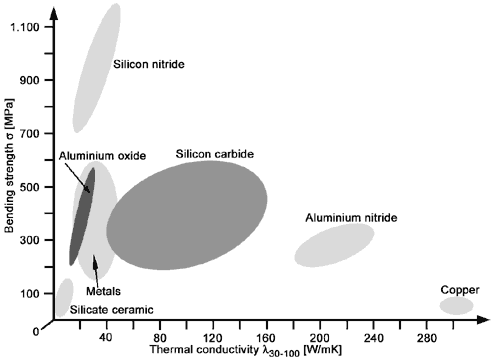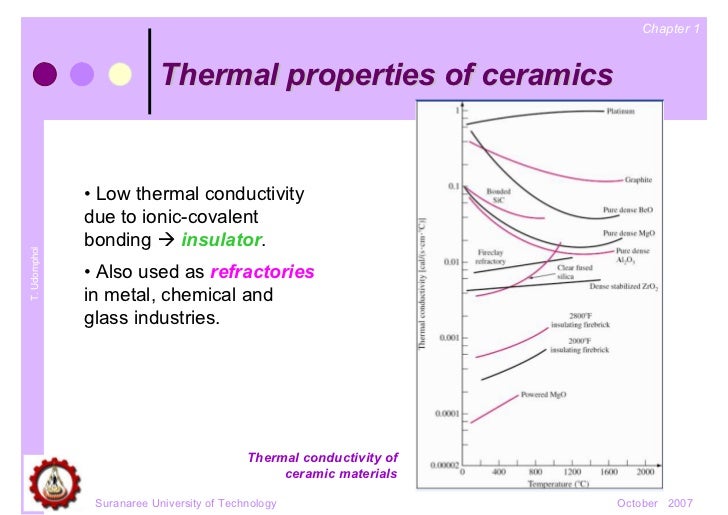Thermal conductivity is a material property that describes ability to conduct heat thermal conductivity can be defined as the quantity of heat transmitted through a unit thickness of a material in a direction normal to a surface of unit area due to a unit temperature gradient under steady state conditions.
Low thermal conductivity ceramic materials.
Among fine ceramics also known as advanced ceramics some materials possess high levels of conductivity and transfer heat well while others possess low levels of conductivity and transfer less heat.
Looking at the values quoted in various handbooks papers and data sheets two things are observed.
Twelve commercial ceramic materials were selected for this irradiation study and are listed in table 1 along with their room temperature physical properties.
In a certain range increasing the thermal conductivity of ceramic materials by specific methods will improve its ability of heat conduction heat convection and heat radiation so as to further expand its application field.
Ceramics with high or low thermal conductivity can be selected from our materials list.
The thermal grease 860 is a silicone oil with a zinc oxide filler and 8616 and 8617 are synthetic oils with various fillers including aluminum oxide and boron nitride.
Kyocera is the global leading manufacturer of superior precision fine ceramics advanced ceramics.
Zirconium dioxide zro 2 sometimes known as zirconia not to be confused with zircon is a white crystalline oxide of zirconium its most naturally occurring form with a monoclinic crystalline structure is the mineral baddeleyite a dopant stabilized cubic structured zirconia cubic zirconia is synthesized in various colours for use as a gemstone and a diamond simulant.
Decreasing solid loading leads to the porosity of ceramic foams.
Learn about product material thermal conductivity.
The property that measures how well heat is transmitted through a material is called thermal conductivity.
Zirconia ceramic foams with porosity of 97 9 has low thermal conductivity of 0 027 0 004 w m k 1 which could be used as thermal insulation and refractory material.
The compressive strength could be improved significantly by increasing the sintering temperature.
The problem with the thermal conductivity of ceramics is the dependence on the composition grain size and manufacturing process which make it rather difficult to obtain a reliable value from literature only.
The thermal conductivity of ceramic materials plays an important role in its application.
These thermal greases have low electrical conductivity and their volume resistivities are 1 5 10 15 1 8 10 11 and 9 9 10 9 ω cm for 860 8616 and 8617 respectively.







